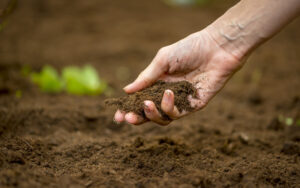Back to: Pre Vocational Studies Primary 4
Welcome to class!
In today’s class, we shall be talking about the soil suitable for planting different crops. I trust you will enjoy the class!
Soil Suitable for Planting Different Crops
Did you know that not all soils are the same? Different soils have different properties, and these properties can affect the growth of different crops. By understanding the type of soil you have, you can choose the best crops to grow.
Types of Soil and Suitable Crops

- Sandy Soil:
- Characteristics: Loose, gritty, and drains water quickly.
- Best for: Carrots, potatoes, and watermelons.
- Why: These crops thrive in well-drained soil and can tolerate the lower nutrient content of sandy soil.
- Clay Soil:
- Characteristics: Heavy, sticky, and retains water.
- Best for: Rice and cabbage.
- Why: These crops require a lot of water and can tolerate the heavy clay soil.
- Loamy Soil:
- Characteristics: A mixture of sand, clay, and silt, providing a good balance of drainage and water retention.
- Best for: Most crops, including vegetables, fruits, and grains.
- Why: Loamy soil is considered the ideal soil type for most crops due to its balanced properties.
- Silty Soil:
- Characteristics: Smooth, powdery, and retains water and nutrients well.
- Best for: Lettuce and spinach.
- Why: These crops thrive in nutrient-rich, well-drained soil.
Improving Soil Quality

To improve soil quality and make it more suitable for different crops, consider the following:
- Adding Organic Matter: Incorporating organic matter, such as compost or manure, can improve soil structure, water retention, and nutrient content.
- Crop Rotation: Rotating different crops can help maintain soil fertility and prevent the buildup of pests and diseases.
- Cover Cropping: Planting cover crops can help to suppress weeds, prevent erosion, and add organic matter to the soil.
- Mulching: Applying mulch can help to conserve moisture, suppress weeds, and regulate soil temperature.
- Testing Soil pH: Testing your soil’s pH level can help you determine if you need to add lime to adjust the acidity.
Summary
By understanding the different types of soil and their suitability for various crops, you can make informed decisions about what to plant and how to care for your garden. Remember, healthy soil leads to healthy plants and abundant harvests.
Evaluation
- Can you name the three main types of soil?
- What is the best type of soil for growing most crops?
Welldone!
We have come to the end of today’s class. I hope you enjoyed the class!
In the next class, we shall be discussing Reasons for Wearing Clothes.
In case you require further assistance or have any questions, feel free to ask in the comment section below, and trust us to respond as soon as possible. See you in the next class!
